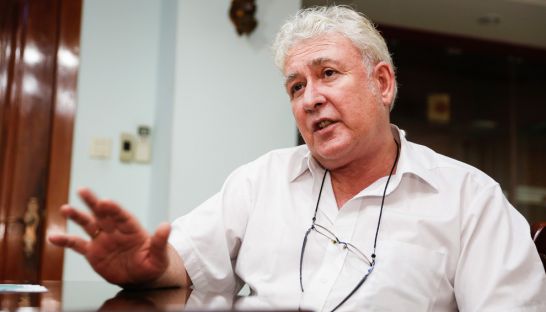A tighter race for telecoms
A tighter race for telecoms
The phenomenal growth of mobile phone use, and more recently the switch to smartphones, is driving the development of Cambodia’s telecom sector and putting more demands on infrastructure. The Post’s Cheng Sokhorng sat down with Im Vutha, director of the regulation and dispute unit at the Telecommunication Regulator of Cambodia, to discuss the industry’s challenges.
What challenge does 4G infrastructure pose on Cambodia’s limited bandwidth?
At present, we have six operators in the country, of which only three – Smart, Viettel and Cam GSM – are capable of operating 4G networks. The main difference that 4G provides is in internet speed, as it is able to send or receive data much faster than earlier generations like 2G and 3G. However, 4G poses a challenge, as in order to obtain this fast data transfer speed we need more bandwidth, which requires fibre-optic technology.
Even with 4G deployed, however, we cannot fully access its speed potential because our bandwidth is limited. Why? Because all of our operators are connected to international fibre-optic networks indirectly through Thailand or Vietnam. At present, Cambodia does not have any submarine connection to international fibre-optic networks. If we can build one, then we will be able to exploit the full speed capacity.
How do you intend to solve that challenge?
We have issued licences for submarine cable connections to four companies, Telecom Cambodia, TelchoTech, CFOCN and Chuan Wei Cambodia. We expect operations to begin in 2018. But we also face another challenge in that the operators are only keen to invest in cities or business areas to ensure a profit. In many remote areas forget 4G. They don’t even have 2G or 3G, as the operators did not expand there.
So in order to promote internet access in these remote areas, the operators must follow a new regulation adopted by the National Assembly in which they are required to pay a USO [universal service obligation] amounting to 2 per cent of net profit. This will be used to reduce the gaps in internet coverage in remote areas.
Many telecoms have purchased bandwidth but are not utilising it. What is the TRC doing to free up this bandwidth for other telecoms to use?
The Ministry of Posts and Telecommunications sets policies and develops plans, while the TRC enforces and monitors them. However, the operators bought the bandwidth to make a profit, so it is up to them to use its capacity. We are a free market and we need to provide fair competition, so the state can only regulate the standard and quality of internet provided to consumers.
There is talk of consolidation in the telecom sector. How would this better serve consumers?
It’s just rumours, as until now nothing has changed. We still have the same six telecom operators, of which three are big and the others are small.
Is there any concern of monopolisation or unfair competition in the telecom sector?
Back in 2011 and 2012 there were a lot of complaints, with the operators accusing one another of predatory pricing. It was complicated, as they claimed it was a free market and the state could not legally get involved. However, in the end the government was forced to intervene because they were selling their product at below operating cost, which was unfair.
Now we see that the operators are generally happy with each other and costs are about the same among all of them. When the free market is stable, we do not interfere.














